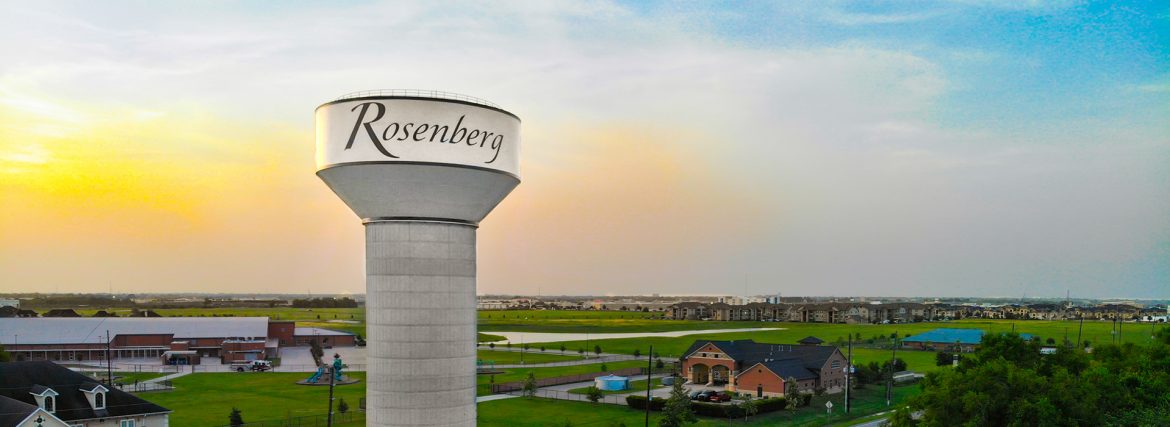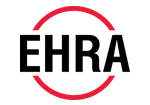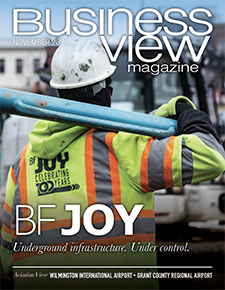Rosenberg, Texas
Quality growth
Business View Magazine interviews Jeremy Heath, Director of Economic Development in Rosenberg, TX, as part of our focus on best practices of American cities.
Rosenberg, Texas, once affectionately known as “Mudtown,” due to the dirt streets and regular flooding of the Brazos River, which borders the town to the north, was first settled around 1823 in an area of land that Mexico granted to the original 300 families, known as the Old 300, who settled the territory under the auspices of Stephen F. Austin. The town was subsequently named after Henry Rosenberg, who migrated from Switzerland to Galveston, Texas in 1843, and was the first president of the Gulf, Colorado and Santa Fe Railway.
Rosenberg began as a shipping point on the Brazos River, and reached a boom in the late 19th and early 20th centuries as the railroads developed. It incorporated as a city in 1883, and, by that time, local land developers were sending promotional literature to the northern and midwestern states, explaining that “the famous Brazos Valley has the most fertile land in America,” and showing pictures of green spaces, fruit orchards, wagons of cotton waiting to be ginned, and Victorian homes, all intended to entice more settlers to the area. Soon there were people of German, Czech, Polish, and Mexican ancestry flocking to the area. There was even a section called “Indiana Town,” after the carpenters and craftsmen who came from Indiana with new construction techniques intended to withstand hurricane-force winds.
Rosenberg grew to become a center of commerce in the 1940s and ‘50s and was known as the “Hub of the Gulf Coast.” Today, the city of 40,500 is experiencing unprecedented growth in commercial and residential development while holding tight to its roots and charm. “We want our growth to be quality growth,” explains Jeremy Heath, Rosenberg’s Director of Economic Development. “We want it to be sustainable growth, and when it comes to long-term sustainability, there are no assets that compare to a strong, highly-skilled workforce. Right now in the economic development world, that’s question number one when someone is looking at a city: ‘Do you have the workforce? Do you have the people skilled enough to create whatever it is that we create to make money?’ And we do.”
In order to build and sustain that workforce, the Rosenberg Development Corporation committed about $2.5 million over a ten-year period to bring in Texas State Technical College (TSTC)’s newest campus in the state on an 80-acre tract, right in the heart of the city. Since 2016, TSTC has constructed two buildings and will have seven when it’s fully built out. When complete, the school will have the capacity to accommodate between four and five thousand students.
“What’s really exciting about TSTC is the breadth of their curriculum,” notes Heath. “Our students can train in the traditional areas: diesel mechanics, HVAC, electrical line worker technology, welding – and those are huge right now, especially in the fast-growing markets around Houston. But a lot of these younger students are tech-savvy. They can choose cutting edge training in cyber-security, advanced robotics, precision machining, and they get to work on the newest and best training facilities and equipment. It’s an investment that we think is going to shape our future and the entirety of our economy for decades.”
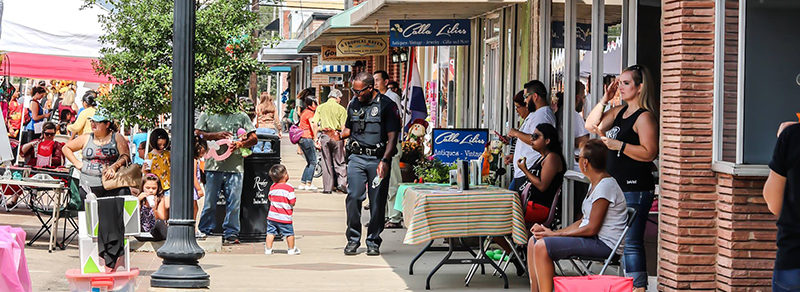 Another major factor in long-term economic sustainability, according to Heath, is mobility – the ability to efficiently move people and goods around. “And we’re blessed to have multi-modal access attractive to companies reliant on moving goods,” he asserts. “We have three Class 1 rail lines that converge in the city – Kansas City Southern, Union Pacific, and Burlington Northern Santa Fe. We also have three major roadway corridors that intersect the city, and all three of them are currently being expanded by the Texas Department of Transportation. Interstate 69, which has been known for years as U.S. Highway 59, is currently being expanded to accommodate federal interstate standards, which will not only double the traffic capacity through the city, but will open up previously undeveloped greenfield sites with the construction of new access roads and the improvement of the existing access roads.”
Another major factor in long-term economic sustainability, according to Heath, is mobility – the ability to efficiently move people and goods around. “And we’re blessed to have multi-modal access attractive to companies reliant on moving goods,” he asserts. “We have three Class 1 rail lines that converge in the city – Kansas City Southern, Union Pacific, and Burlington Northern Santa Fe. We also have three major roadway corridors that intersect the city, and all three of them are currently being expanded by the Texas Department of Transportation. Interstate 69, which has been known for years as U.S. Highway 59, is currently being expanded to accommodate federal interstate standards, which will not only double the traffic capacity through the city, but will open up previously undeveloped greenfield sites with the construction of new access roads and the improvement of the existing access roads.”
“State Highway. 90-A runs east/west through our city,” Heath continues. “It’s still a highly-trafficked area through a commercial district, but the corridor that can have the greatest impact on us in the future is State Highway 36. We’re about 50 miles north of the port of Freeport and SH 36 runs north of the port and directly to our City. Port Freeport is currently in the process of deepening its channel from about 46 feet to 53-56 feet, which is going to allow it to accept the new panamax freighters that can now access the Gulf of Mexico through the recently expanded Panama Canal. The tonnage of products and materials that will move through the port will grow exponentially. TxDOT is currently widening SH 36 from the port to Rosenberg, and eventually further north. So, this project is going to make us an even more viable market to companies that import or export product or raw material that they use in their processes.”
Besides excellent roads, all the other aspects of a functioning infrastructure, including water and wastewater systems are, according to Heath, “the key to everything. Our job is to make sure we’re providing the infrastructure to sustain our growth without placing additional burden on the taxpayer,” he explains. “In the past decade, we’ve dropped our ad valorum tax rate by about 10 cents per $100 dollars of appraised valuation, while maintaining and improving our roads, water, sanitary sewer, and storm sewer systems. Water is the most crucial city service everywhere; we went through a statewide drought in 2011, and that put water at the forefront for communities across the state. Rosenberg was proactive, adopting a comprehensive master plan to address our future water needs. We contracted with the Brazosport Water Authority (BWA) to provide more than five million gallons of treated surface water per day, which will allow us to service our growth and maintain compliance with increasing county and state groundwater-versus-surface water requirements. A 37-mile transmission line was constructed by BWA to transport the water into the City. It was a bold move on our part to partner with BWA, but the foresight will secure our ability to sustain our system amid continued residential and commercial growth.”
“Infrastructure for new projects is crucial, as well,” Heath adds. “We’ve made a commitment to funding infrastructure expansion targeting commercial projects and primary job creation. In February 2019, we closed a deal with Dollar Tree International for construction of a one-million-square-foot distribution center on the west side of the City, and we funded more than $6 million to extend water and sewer service and improve roads to the site, which helped make the project happen. In turn, Dollar Tree committed to spending $150 million dollars on the facility, which will have a major impact on our overall appraised taxable value. At the grand opening in early September, they reported more than 500 new full-time hires. In the long-term, the roughly two-and-a-half miles of water line we extended to the property that runs along Interstate 69 and down Spur 10 and crosses a large number of undeveloped properties, will make those areas more viable for future development because they already have access to water.
“We’ve also funded utility and road extensions to our currently developing Rosenberg Business Park, a 184-acre deed restricted development targeting light manufacturing and distribution projects, and utilities to Walsh Road Industrial Park, a 24-acre development offering smaller tracts, from one to five acres, both of which should be a strong job producers for us. We are also currently in the process of extending Airport Avenue from a major thoroughfare to one of the new access roads on Interstate 69. It will provide better access to a planned 108-acre mixed use development project that’s going to generate some office space, retail, restaurants and possibly a family-entertainment venue, as well.”
Supporting the city’s infrastructure expenditures are property tax revenues that are split, almost evenly, between commercial and residential property owners. “It’s a good thing to have that balance because you don’t really want to place the tax burden on your businesses, and you don’t want to put it on the residents either,” Heath shares. “You want everybody to contribute and, right now, that’s where we are – everything is aligned. In order to maintain the services that we provide our citizens, sales tax is also crucial. Our most impactful commercial project was the first public/private partnership the City embarked on. In 2005, the City and the Rosenberg Development Corporation incentivized NewQuest Properties to develop Brazos Town Center, a 100-acre retail-heavy, mixed-use development that has become the primary sales tax generator for Rosenberg. It’s the first thing you see as you enter the City on I-69 from the northwest, and it cemented Rosenberg as a viable suburban option to attract new residents by bringing in national retail and restaurant brands the City would have had a hard time securing on its own.”
While launching new projects and landing new businesses are key to Rosenberg’s growth agenda, helping existing businesses to expand their facilities and create additional jobs is equally important. To that end, Heath reports that over the last few years, the City has provided infrastructure reimbursements and tax abatements to aid in the expansion of Benedettini Cabinetry; OCuSOFT, which develops and manufactures eye and skin care products; Seatex, Ltd., a chemical blending company; and Si Environmental, a water utility service provider. “Those expansion projects, combined, retained about 600 full-time jobs and are projected to create about 150 new jobs over the next five years,” he notes. “It also sends a message to other current businesses in our community that we value their investment, and we will work with them to grow and prosper.”
Another important aspect of Rosenberg’s attention to growth is a focus on community development because it directly affects the City’s ability to attract new businesses and the workers that will be employed by them. “Existing companies that are looking to relocate or expand into different markets obviously look at workforce, land price and whatever incentives we can offer when making their ultimate decisions,” says Heath. “But they also look at quality of life factors because they have to be able to recruit talent, and their ability to recruit talent hinges on the attractiveness of the community. That talent looks at factors such as public safety, access to public parks, dining and shopping options, and, of course, the local public education system. So, the City places a premium on funding vital resources for our police and fire departments to ensure public safety and on maintaining and improving our public parks. Every year, the City and the Rosenberg Development Corporation budget funds for new sidewalk projects and park improvement projects. We also provide funding to the Gulf Coast Chapter of the Texas Master Naturalists to do projects in Seabourne Creek Nature Park, a 164-acre park with a fishing lake, walking and biking trails, and a disc golf course. The Development Corporation has also contributed to expanding and improving Seabourne Creek Regional Sports Complex, which has a top-notch Little League and softball complex and two brand new Junior League baseball fields.”
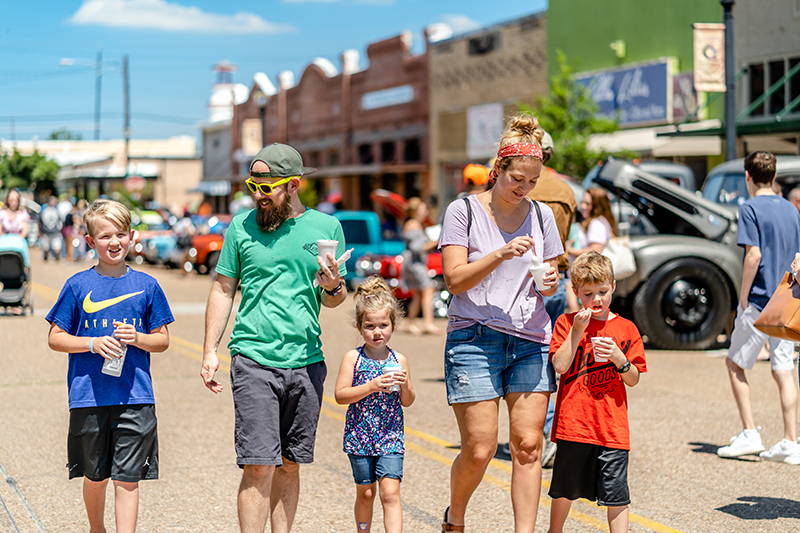 Another aspect of the city’s high quality of life is its historic downtown district. “Our downtown earned a prestigious Cultural Arts District designation from the state in 2012,” Heath reports. “And those are hard to come by. It houses the Rosenberg Railroad Museum and the Black Cowboy Museum, and Another Time Soda Fountain, which is like stepping back in time. It’s also got an art gallery and Cast Theatrical, which puts on a full slate of theatrical productions throughout the year. In 2015, the City and Development Corporation purchased a tract of land downtown and just completed construction on the final phase of a new parking lot to encourage attendance at downtown events and to provide additional parking for the shops. The city also holds its annual Downtown Christmas Nights event there, which is a huge draw; last year, we had about 6,000 people joining the festivities. We invest staff time and money into marketing the different events that we hold in the downtown area.”
Another aspect of the city’s high quality of life is its historic downtown district. “Our downtown earned a prestigious Cultural Arts District designation from the state in 2012,” Heath reports. “And those are hard to come by. It houses the Rosenberg Railroad Museum and the Black Cowboy Museum, and Another Time Soda Fountain, which is like stepping back in time. It’s also got an art gallery and Cast Theatrical, which puts on a full slate of theatrical productions throughout the year. In 2015, the City and Development Corporation purchased a tract of land downtown and just completed construction on the final phase of a new parking lot to encourage attendance at downtown events and to provide additional parking for the shops. The city also holds its annual Downtown Christmas Nights event there, which is a huge draw; last year, we had about 6,000 people joining the festivities. We invest staff time and money into marketing the different events that we hold in the downtown area.”
Growth in residential housing is booming in Rosenberg with over 7,000 new homes built in the last decade, and Heath says that the City has focused on highlighting its housing opportunities throughout the greater Houston region. “We want to appeal to families, especially young families, looking for a place to build a good life,” he affirms. “We’ve been sharing our slogan of ‘Make R-Town Your Town’ to show how easily life in Rosenberg can become an affordable reality for people. We’re hoping that’s having a positive effect and some of the people buying these new homes are getting the feel of that message.”
Going forward into the new decade, Heath says that Rosenberg intends to continue growing and that it’s up to the City’s leaders to make sure that growth is positive, sustainable and strategic. “Growth for just the sake of growth can be unstable,” he declares. “We’re trying to encourage quality growth by investing in and providing the services and amenities that attract residents and businesses who want to be here, and who are going to love being part of the Rosenberg community.”
AT A GLANCE
Rosenberg, Texas
WHAT: A city of 40,500
WHERE: On the Brazos River in southeastern Texas
WEBSITE: www.rosenbergtx.gov
PREFERRED VENDORS
OCuSOFT Inc. – www.ocusoft.com
OCuSOFT®, founded in 1986 in Richmond, Texas, is a privately-held research, development, and supply company specializing in eye and skin care. It started with a vision to address the needs of those suffering from ocular surface disease and other eye and skin care related conditions. Today, the company is most recognized for its #1 doctorrecommended brand of eyelid cleansers, OCuSOFT® Lid Scrub®, in addition to its standing as the preferred distributor of ophthalmic products and supplies by eye care professionals.
OCuSOFT® provides its advanced ophthalmic and cosmetic products with the goal of improving patients’ quality of life. It accomplishes this with a highly trained sales force calling on health care professionals nationwide and a dedicated warehouse facility to ensure that orders are received and processed promptly. As part of the future growth of the company, OCuSOFT® recently opened a new 25,000-sq.-ft., fully airconditioned warehouse facility expansion with upgraded production capabilities. In addition, a new 14,000-sq.-ft. corporate administration building was also added, last year, to accommodate expanding staff operations, and a new 18,000-sq.-ft. cosmetic manufacturing building is currently nearing completion and will be fully operational in the first quarter of 2021, allowing the company to develop products on-site while expanding its research and development program.
OCuSOFT® maintains a corporate culture that is professional but runs on the concept that the firm is not just a place of business but also a family. OCuSOFT® has an open-door policy where all employees have a voice, and all company information is available. OCuSOFT® offers competitive pay and benefits, an on-site gym facility with personal trainer, an on-site kitchen staff to provide home cooked meals, and a culture that cannot be matched. For example, throughout the year, employees enjoy the benefit of random raffle drawings and company special events ranging from pajama parties to cook-off contests. OCuSOFT® believes that an employee’s spirit and morale greatly influence the overall performance of the company.
OCuSOFT® also gives back to many charitable organizations, including international mission trips, local and regional fundraisers, overseas U.S. military troops, and health fairs across the U.S. The company contributes to these organizations as an extension of its efforts to improve lives and make a difference in the world. Cynthia Barratt, President/CEO of OCuSOFT®, states “For 34 years OCuSOFT® has been proud to be a part of Ft. Bend County. We strive to create more career opportunities each year, and in turn, give back to our community.”
EHRA Engineering – www.EHRAinc.com
For 84 years, EHRA Engineering has provided exceptional engineering services in the Greater Houston region. EHRA is a multidisciplinary civil engineering firm able to meet clients’ needs through experience and using a reliable approach to innovative project planning and design. We deliver the best solutions for the communities we serve.
